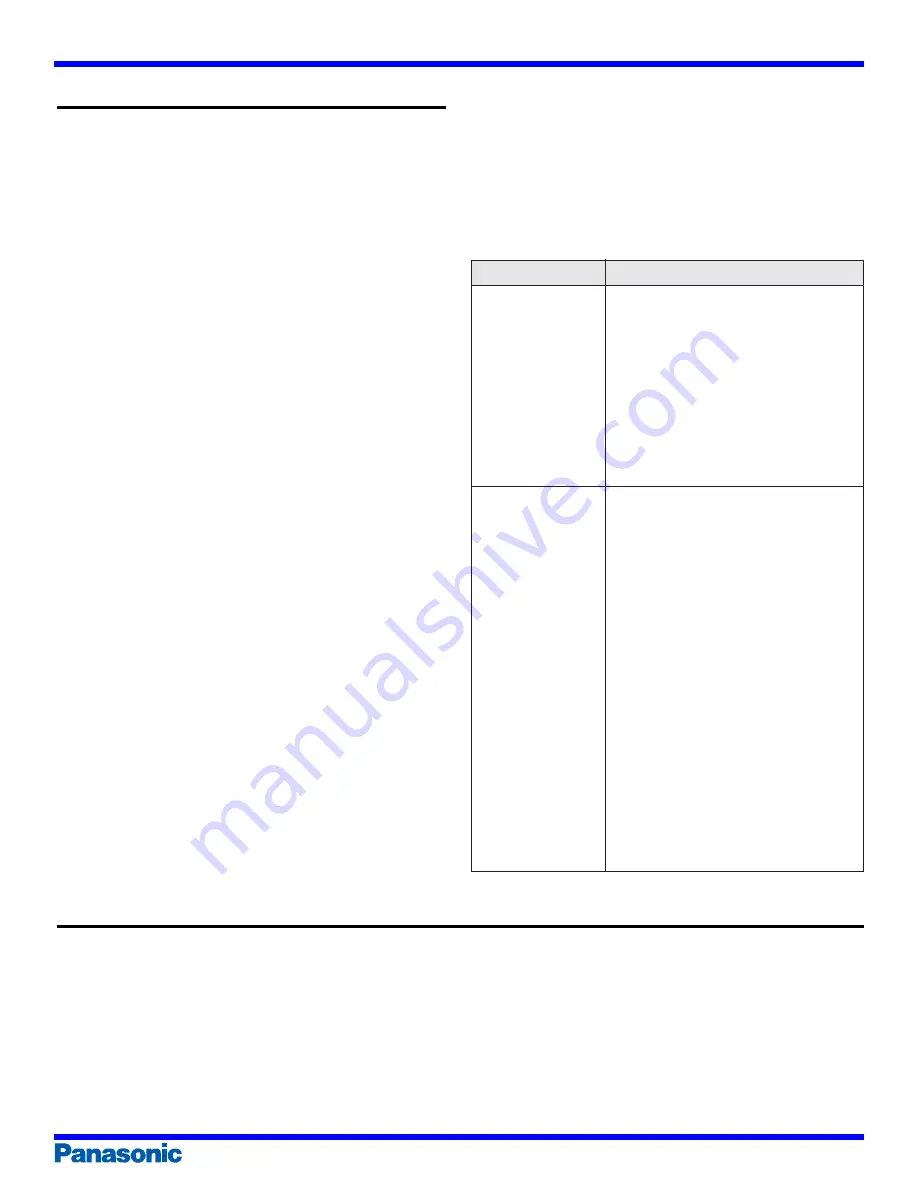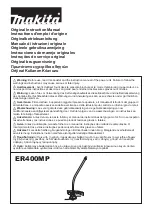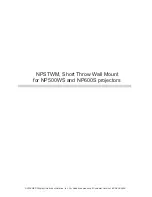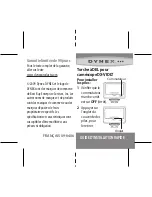
VRLA BATTERIES
AUGUST 2003
This information is generally descriptive only and is not intended to make or imply any representation, guarantee or warranty with respect to any cells and batteries. Cell and battery designs/specifications are subject
to modification without notice. Contact Panasonic for the latest information.
PRECAUTIONS FOR HANDLING VALVE-REGULATED LEAD-ACID BATTERIES-
CONT.
3. Preparation Prior to Operation
DANGER
(1) Be sure to provide enough insulation around the
lead wires and/or plates used between the
batteries and the application. Insufficient
insulation may cause an electric shock, heat
generating from a short circuit(or excess current)
may result in an injury, burn, smoke or ignition.
CAUTION
(1) Do not connect the battery directly to a power
outlet or a cigarette lighter socket of an automo-
bile without using a charger. Direct connection to
power sources may cause battery leakage,
heating or bursting.
(2) Turn off the switch of the circuit when connecting
the battery to a charger or a load.
(3) If newly purchased batteries exhibit any irreg-
ularities in initial use, such as rusting, heating or
other problems, they should not be used. Contin-
ued use of an irregular battery may lead to
leakage, fire or bursting of the battery.
REQUEST
(1) Since the batteries tend to lose a part of their
capacity due to self-discharge during shipment
and storage, recharge the batteries before you
use them after purchase or long-term storage in
order to restore their full capacity. Check for the
following conditions before recharging:
4. Unspecified Use
CAUTION
(1) Do not place the batteries in an unspecified use
or they may leak, ignite, or explode.
Charging method
Constant voltage
Constant current
•
Regulation range of the controlled
voltage: 7.25V to 7.45V/6V battery,
14.5V to 14.9V/12V battery;
Initial current: 0.1CA to 0.4CA;
Maximum charging time: 24 hours.
•
Short-time charge is possible
when several batteries of the same
model, under the same storage
conditions can be charged in
series. Otherwise they can be
charged separately.
•
Charging current: 0.1CA
•
Charging time (hours)=[Amount of
self-discharge (Ah)/0.1CA] x 120%
•
Rough estimation of amount of
self-discharge is as follows (for an
example):
When the storage ambient
temperature is lower than 25
°
C,
and storage time is known, assume
the following amount of self-
discharge: [5%/month] x storage
months
•
Multiply this by the rated capacity
(at 20 hour rate) of the battery
•
Regardless of the above
calculation, the charge time for a
refresh charge must be less than 12
hours.
•
When the storage ambient
temperature is higher than 25
°
C,
please consult Panasonic.
Charging condition (at 25
°
C)



























